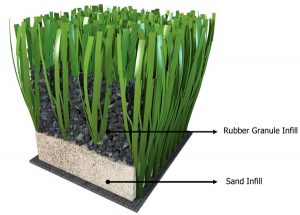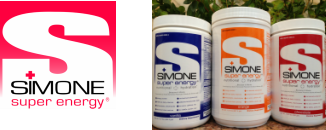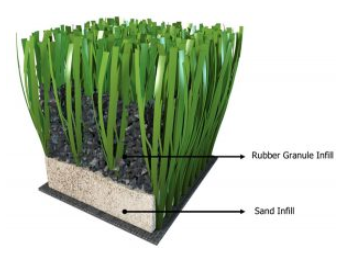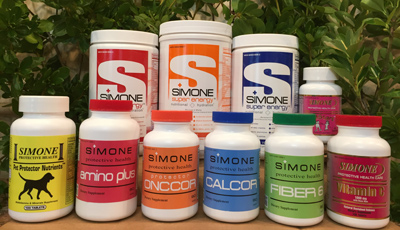2/16/16
We do not diagnose disease or recommend a dietary supplement for the treatment of disease. You should share this information with your physician who can determine what nutrition, disease and injury treatment regimen is best for you. You can search this site or the web for topics of interest that I may have written (use Dr Simone and topic).
“We provide truthful information without emotion or influence from the medical establishment, pharmaceutical industry, national organizations, special interest groups or government agencies.” Charles B Simone, M.MS., M.D.
ARTIFICIAL TURF – RISK FOR CANCER, INFECTION, LEAD POISONING, INJURY
Lawrenceville, NJ (Dr Simone) – A mother brought her 5 year old son to me and said she finds little pieces of black rubber in his shoes every time he has “gym” in the new field house of his school. She wanted to know if they are a health hazard. Governmental reports indicate that they are (http://www.ncbi.nlm.nih.gov/pmc/articles/PMC2265067/).

Artificial turf fields are common because municipalities and educational institutions want to reduce maintenance and the need for water and pesticides for grass. But the cost is not that much different. Installing turf for a soccer field costs about $1.4 million compared to $690,000 for grass. When the costs are prorated over the expected lifespan of the field, including maintenance, the difference in cost is less than $15,000 more for the natural grass, according to A New Turf War.
One design for these turfs uses crumb rubber infill, sometimes mixed with silica, that provides drainage, padding, and holds the blades of synthetic grass upright. The crumb rubber contains man-made and natural rubber and is derived from recycled tires accounting for one-twelfth of the 300 million tires that are withdrawn from use each year.
CANCER
Chemicals called polycyclic aromatic hydrocarbons and volatile organic compounds are found in and released from crumb rubber. Some of these compounds are known or suspected carcinogens as determined by the International Agency for Research on Cancer. A literature review of studies of the release of chemicals from recycled tires in laboratory settings and field studies found 49 chemicals, 7 of which were carcinogens. The four compounds in greatest concentration in crumb rubber:
-
Butylated hydroxyanisole: Recognized carcinogen, hormone disruptor, gastrointestinal toxicant, immunotoxicant, neurotoxicant, skin and sense-organ toxicant.
-
Benzothiazole: Skin and eye irritation, harmful if swallowed – under certain conditions this can convert to the carcinogen, N-nitrosamine.
-
n-hexadecane: severe irritant based on human and animal studies.
-
4-(t-octyl) phenol: corrosive to mucous membranes.
INFECTION
In June 2004 a study showed that turf burns and skin shaving scrapes can increase the risk for skin infection of a drug-resistant bacteria called methicillin-resistant Staphylococcus aureus (MRSA) [https://cid.oxfordjournals.org/content/39/10/1446.full]. These results have been corroborated in other studies. In addition, an industry study sponsored by Sprinturf, a maker of synthetic turf, found that infill containing a sand/rubber mixture had 50,000 times higher levels of bacteria than infill made of rubber alone.
LEAD POISONING
In June 2008, tests by the New Jersey Department of Health and Senior Services (NJDHSS) of artificial turf playing fields in that state found these fields contain potentially unhealthy levels of lead dust. These results were sent to the Centers for Disease Control and Prevention (CDC) and the Agency for Toxic Substances and Disease Registry (ATSDR) and corroborated by the Center for Environmental Health. This health threat is substantial enough that the CDC lists artificial turf as one of the seven sources of children’s lead exposure along with items such as paint, water, and certain toys (http://www.cdc.gov/nceh/lead/tips/sources.htm).
As the turf ages and weathers, lead is released in dust that could then be ingested or inhaled, and the risk for harmful exposure increases. The CDC and the Environmental Protection Agency indicates there is no safe level of lead exposure. Lead causes impaired neurological development symptoms – learning problems, speech problems, and lower IQs.
INJURY
Multiple studies indicate that artificial turf increases the risk for injuries.
(http://www.plantscience.psu.edu/research/centers/ssrc/research/synthetic-turf-injuries)
SUMMARY OF TOXIC EFFECTS OF CRUMB RUBBER
-
Cancer Risk
-
Irritation and/or infection of the respiratory system, eyes, skin and mucous membranes
-
Systemic effects on the liver and kidneys
-
Neurotoxic responses and developmental impairment
-
Allergic reactions
With all these toxic effects and the fact that crumb rubber cannot be legally disposed of in most landfills or dumped in the ocean because of its toxicity, why do we let our children play on it? And why does the government permit it?
(c) 2017 Charles B. Simone, M.MS., M.D.




